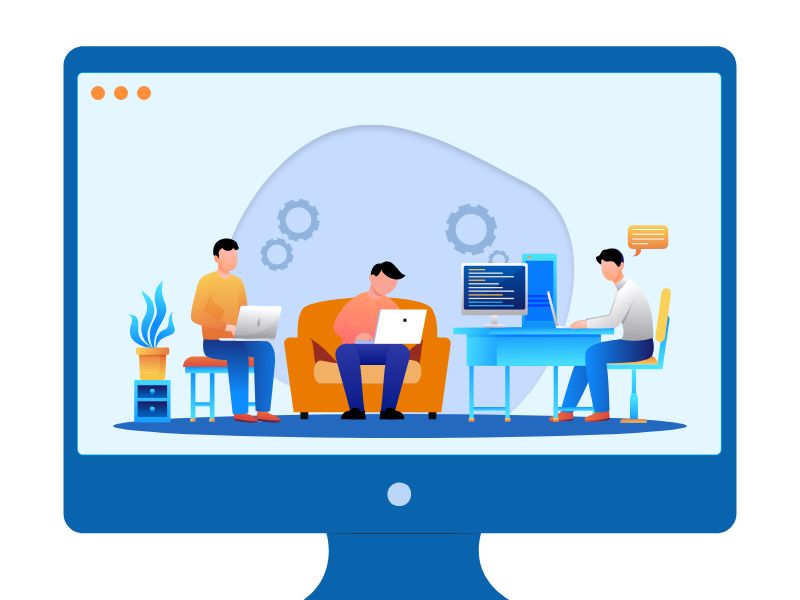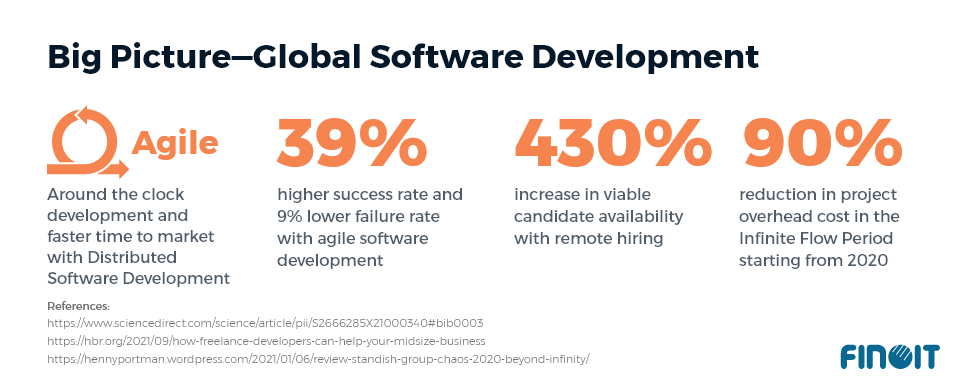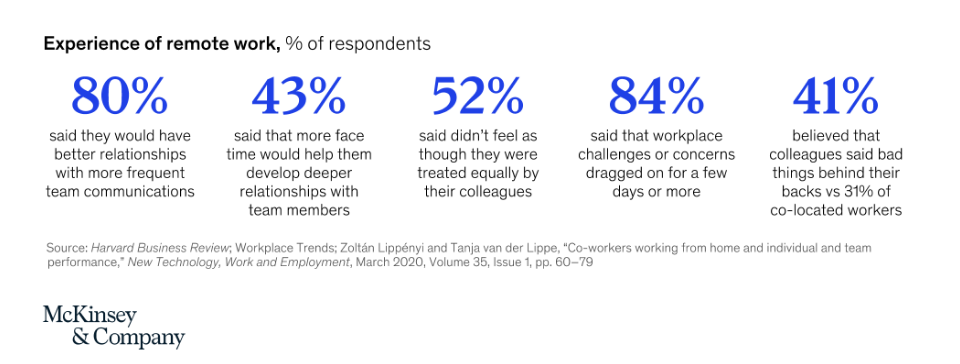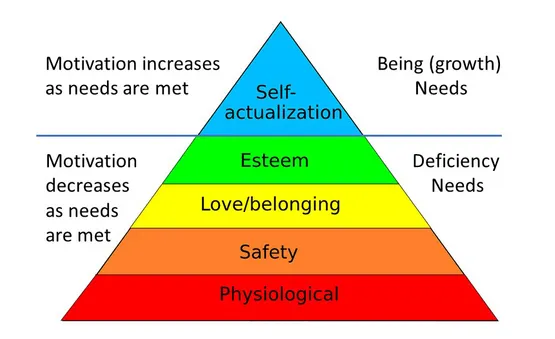Key Strategies for Successful Offshore Software Development Management

Offshore software development has become increasingly popular as businesses look for ways to access global talent and reduce costs.
According to a report by Statista, the global offshore software development market is expected to reach $88.9 billion by 2027, with a compound annual growth rate of 7.9% from 2020 to 2027. As more companies turn to offshore development, it’s important to understand how to manage these projects effectively.
As Bill Gates, co-founder of Microsoft, once said, “The first rule of any technology used in a business is that automation applied to an efficient operation will magnify the efficiency. The second is that automation applied to an inefficient operation will magnify the inefficiency.” This quote highlights the importance of efficient processes in any business operation, including offshore development.
To help businesses manage offshore development effectively, we have compiled essential tips and best practices based on industry expertise and research. Since strategies build over a foundation of pillars, prior to moving strategies we look at 10 elements that make these strong pillars.
10 pillars to build for strategizing Offshore Software Development

In 2007, researchers explored differing performances in virtual settings among two software teams with identical size, goals, and leader. Shifting a leader six hours ahead led one team to flourish, while the other failed due to meeting scheduling, member well-being, and skill distribution issues. Fast forward 16 years, with advanced tech and focus on well-being, the global software industry has achieved a new level of success.

Yet there is a parallel reality. A reality inflicted with doubts, delay, and difficulties. And that even after monumental achievements in communication technology and agile methodologies, managing software developers in remote settings, be it from the same company or any offshore software development company, is still a big challenge.
According to McKinsey, “the experience of remote working can lead to inefficiency and reduced cohesion.”

Image source: www.mckinsey.com
It is quite evident with this data that the problems of remote software development team management are intrinsically inherent to human behavior. Lack of trust in each other, followed by reduced face-to-face communication, and unequal treatments are common challenges that remote teams face today.
These challenges increase in manifolds when there are language barriers, social-cultural differences, and disbalance of technical and attitudinal skill sets, commonly observed in offshore development teams.
In our attempt to solve the challenges of remote and offshore development team management and develop best practices, we have combined three ways:
- Built a foundational framework of team behavior on the 10 Good Teams principles recommended by the Standish Group Chaos 2020: Beyond Infinity report.
- Explore what has worked for successful offshore development companies so far in remote team management
- Use our own experience of providing offshore software development services for 12 years, and successfully completing more than 200 software projects.
Here it goes!
1. Formation: Individuals into Team
If you are hiring remote software developers, the first step is to convert individuals into a team by helping them adopt a fresh perspective to look at each other, as a “value addition” to the software development team.
It does not matter how you are engaged with the remote software developer, whether through an offshore software company or freelancer, everyone should feel included, the part of the team working on a common goal.
To do that, as a project manager or IT service leader, you need to influence them rightly to find a respectful place in the software development team. The influential principle is one of the first Good Team principles by the Standish Group. According to Robert Cialdini’s six principles of influence, these six principles influence people to change their behavior and undertake the right action.

2. Attitudinal Factors
The second in the row of 10 Good team principles by the Standish Group, mindfulness is about being in constant connection with the present moment, and not letting opinions of the past take over the decision-making requirements of the present.
Since offshore and remote software developers rarely get the chance to mend over past incidents with corridor talks or watercooler conversations to sip in the hurtful comments and start afresh, the principles of mindfulness may help them while reminiscing bad experiences.
According to Jon Kabat-Zinn, an American professor emeritus of medicine and the creator of the Stress Reduction Clinic, there are 7 attitudinal factors that act as a pillar of mindfulness.
Take a look at the 7 attitudes that project leaders can develop in themselves to manage remote and offshore software development teams.
| Principles | Description | Implementation |
|---|---|---|
| Non-judging | Being an impartial witness of your own experiences and your team members. | As a project leader, having a neutral view of your team members helps you understand their strengths and weaknesses and select the right course of action to surmount them. |
| Patience | All good things take their time and space. | Putting unnecessary pressure on the team to get immediate results would only harm your cause. Instead, focus on building the right processes and timelines to manage what to expect and when. |
| A beginner’s mind | Look at people and experiences with fresh perspectives every time. | It is about giving a chance to people, in every conversation, by getting over the biases and opinions. Meeting as if you are meeting them for the first time, and with an open mind. |
| Trust | Learning to trust people and our own instincts. | It helps in an effective delegation of responsibilities to the team. When you trust people that they can learn and upskill themselves and that you have created a learning environment for them, you can easily trust them to do the job. |
| Non-striving | Taking a break to celebrate the milestones. | Constant chasing of tasks and timelines may exhaust your team, and take away the “happiness” of doing the job every day. It is important that you give them the time to relax and contemplate. |
| Acknowledgment | Be open towards unexpected feelings. | Every software developer may not feel the same way about an incident. As a team leader, you must acknowledge their feelings, and allow them to feel that way instead of pushing them to the edge. |
| Letting Go | Take a step back, observe, and reject whatever may hamper the project’s success. | Even as a team leader, you need to track your actions and decisions to ensure that your actions are not motivated by opinions but fact. |
Disagreements, disputes, mistakes, and iterations are part of the software development team meetings. By inculcating the culture of mindfulness, remote software developers could easily get over “what has happened in the past ” and focus on “now” to build solid work relationships.
3. The Five Deadly Sins Principles
According to Standish Group, a healthy project ecosystem requires software team lead and developers to have strong emotional maturity to support the skills to be self-aware and develop abilities to manage team relationships.
The Group has outlined 5 deadly sins that often prevent software development teams from achieving this emotional maturity.
This emotional maturity is also essential when managing an offshore or remote software development team. As failing to have it leads to project failure, dispute, loss of productivity, and high attrition rate. Here are those 5 deadly sins and ways to surmount them.
| Sins | Description | Action |
|---|---|---|
| Overambition | It impacts the risk assessment of behaviors of software developers that affects their ability to conduct requirements assessment leading to project overruns. | If found that someone’s overambition is causing harm to the morale of the team, you need to validate the roles and responsibilities, conduct regular meetings, and break the project into small implementations to prioritize requirements. |
| Arrogance | It refers to an evidenced behavior of overbearing pride directed at superiors, peers, and inferiors. It prevents building a conducive environment for risk assessment. | Confront directly, and make sure that individual roles are aligned with project goals, and every one understands their contribution to the project and has the ability to view aspects from an unbiased eye to bring honesty to the project. |
| Ignorance | It is indicated by being unaware, uninformed, uneducated, and unsuspecting about the project goals, direction, opportunities, and challenges. | Simplify communications, keep messages to the point, use an easy-to-use decision pipeline, and create educational opportunities. |
| Abstinence | It is characterized by refraining from contributing to the project or participating in team activities. | 4 pillars of R: Require-all stakeholder participation, Regular-Keep meetings regular and recurring, Replace-Remove members who are not contributing, Review-Review and reevaluate participation. |
| Fraudulence | Deliberate trickery or action to deceive team members to gain advantage or avoid confrontation. | Maintain transparency, measure performance, and mandate a formal change process to prevent blindsiding. |
4. Problem Solving
In the context of offshore software development team management, problem-solving can be interpreted on the basis of the root cause of the problem, whether it is a person in the software development team or any constituent of the IT project, for example, its complexity or the bulk of the work or conflicting goals.
As stated in the CHAOS report 2015, by Standish Group, “inside of every complex problem are simple solutions.”
The statement itself serves as the guiding principle to approach a problem and that is to break it down into parts and then address the challenges one by one.
As you might be communicating through video conferences or email or phone calls, addressing the problem in chunks would give enough time to the remote and offshore software developers to sink in the proposed solution and sort it out the rest of it.
However, you need to be sure to complete the cycle of a solution, once begun, instead of keeping loose ends that might create problems in the future.
5. Communication
As a matter of fact, communication in an offshore software development environment is a widely studied area. It is integral to software development, one that occurs at every phase of the software development cycle, with teams in the project, whether they are from the same company working in virtual settings, or outsourcing, offshoring, or nearshoring.
Here let us explore communication in distributed settings and how remote and offshore software development teams can effectively communicate virtually.
| Types of Communication | Action | |||||||||||
|---|---|---|---|---|---|---|---|---|---|---|---|---|
| Formal Communication |
|
|||||||||||
| Informal Communication |
|
Communicating with remote and offshore software developers can either make you feel exhilarated to take up new challenges or leave you frustrated in every interaction.
By taking these measures, you may break the barriers of communication, mainly socio-cultural and language differences across time zones.
6.Accept AS IS
When you hire software developers outside your geographic locations, they bring to you the talent required to do the job. But at the same time, they also bring their individual qualities, cultural beliefs, habits, and practices arising from their environment and ethnicities.
As a team leader, you must provide a conducive environment to ensure better adjustment between these individual qualities and organizational standards.
Accepting them “as is” along with their qualities is important to make them feel included, which does not necessarily mean your personal approval of the practices, but your recognition of human equality, innate dignity, and basic rights.
| Fundamental Attitude of Acceptance | |
|---|---|
| Description | Action |
| Acceptance without prejudice | It does not require personal friendship but understanding and respect for human values. It is translated through courtesy, patience, willingness to listen, and not being critical of “complaints or requests” |
| Accepting the potential and possibilities | It means accepting the person for the value they bring to the job to the point of growth. |
| Build dynamics | Provide help and strength, characterized by efforts to recognize, receive, and establish relationships with individuals as they actually are and not in a distorted reality of how you want them to be. |
You may need to hold sensitivity and diversity training to help team leaders and other team members to accept people “as is”.
7. Conscious Decision to Respect
When dealing with remote software developers, a conscious decision to respect the team members would help you “channelize their potential” in a positive direction.
Whereas disrespect is treated as humiliation, which is not easily forgotten or forgiven by an individual. It might invoke frustrations, anxiety, and disappointment within the team, which is difficult to identify in software developers working from remote locations until the damage is done.
Respectfulness stands at the seventh position in Good Team principles by Standish Group, and helps you ensure that every software developer works with dignity and feel free to express her/his view(s) according to organizational standards.
The fundamental principles of respectfulness are:
| Description | Action |
|---|---|
| Accountability | Be very clear with who is accountable for what, and the reporting mechanism. However, it should be expressed in a way that reflects collaboration, trust, calmness, and listening instead of creating a division between the team. |
| Fairness | Keep procedural, interactive, and distribution fairness in task management. Let no remote software engineer feel that someone is entitled to an outcome by virtue of “who they are” and “what they have done in the past” instead follow the principles of equity. |
| Transparency | Set transparent goals, emphasize on the importance of individual contribution, effectively communicate responsibilities, and establish metrics to measure performance. |
8. Confrontations
What happens if something goes wrong in the team, whether it is a bug in the software application or a new requirement that arises out of nowhere or complications from a behavioral issue?
Handling of mistakes or unwanted situations should provide a “learning” value instead of instigating “at any cost” behavior within the team. It is important that all confrontations remain respectful, and do not become predatory with an agenda to bring someone down.
If you are working with remote software engineers across time zones, create a robust reporting mechanism that offers a constructive approach to resolve the problem in time.
| Fundamentals of Reporting Mechanism | |
|---|---|
| Description | Action |
| Reporting infrastructure | Define what amounts to violations, compliance issues, and misconduct, set up processes and people for reporting, and use tools to enable reporting. |
| Intake methods | Determine the intake methods for reporting, for e.g. text messages, emails, project management tools, or video calls. Apply meaningful metrics and ensure open-door communications with managers and supervisors to support an ethical culture. |
| Engaging stakeholders | Fix accountability and responsibility and engage all stakeholders till full resolution. |
| Effective management of the reporting program | Classify integrity line, guideline, value line, helpline, making the difference line, compliance line, ethic line, and alert line within the project and the organization and carry out training initiatives based on them. |
9. Civility
New reports suggest that workplace incivility is at an all-time high. In 1998, 25% of people surveyed have experienced incivility at the workplace, which rose to 55% in 2011, going to 62% in 2016, and increasing to 76% by 2022, according to Christine Porath, an associate professor at Georgetown University and author of Mastering Civility: A Manifesto for the Workplace.
If incivility issues go unaddressed in the workplace, it leads to higher turnover, more absenteeism, and lower productivity.
But the greater problem lies in identifying “what is civility” for that particular person or the team. As in, different people in different geographical locations have different norms of civility. For instance, what may be “cool” to an American or Indian may not be “cool” to a Ukrainian or Filipino due to differences in culture.
In that case, maintaining organizational civility becomes more challenging. However, there are a few factors, focusing on which, IT leaders and project managers can create a culture of workplace civility across the organization, especially in remote and offshore software development teams.
| Factors to Create a Culture of Workplace Civility | |
|---|---|
| Description | Action |
| Outline expected behavior | Make sure that no action is inspired by the animosity against a person on the basis of protected factors such as race, color, national origin, sex, and religion. |
| Encourage tolerance | Foster a tolerant environment so that all software developers can work to their full potential. Keep an open mind and make genuine efforts to step outside the comfort zone. |
| Measure the impact | Measure the impact of civil and uncivil behavior, and reward or punish the person, regardless of who they are. |
10. Hierarchy of Needs
Highly motivated and driven people are integral to a mature software development team.
However, motivation works for different people and at different levels. The same motivation may not be effective for remote senior software engineers with 7-10 years of experience compared to junior software developers with 2-5 years of experience.
Maslow’s Hierarchy of Needs theory depicts the levels in a pyramid structure, classifying the overall needs in two different types: Deficient Needs and Growth Needs. According to Maslow, first an employee attempts to achieve the deficient needs and then strives for growth needs, as depicted in the image.

Image source: www.simplypsychology.org
For instance, when you hire remote software engineers, you must first work towards meeting deficiency needs, such as mentally and physically compliant work hours, job security, inclusiveness, and respect. These are the factors which organizations need to mandatorily consider to make its team work enthusiastically in the organization.
Once the team achieves these levels, motivation would start to decrease and they would aspire for the next step—growth needs, which mostly could be achieved through promotions, learning, and compensation.
Moving to strategies: Best Approaches for Managing Offshore Software Development Outsourcing
John Chambers, former CEO of Cisco emphasized that “Offshoring is an important strategy for companies looking to stay competitive in today’s global economy. It allows us to tap into a worldwide pool of highly skilled talent and deliver high-quality software at a lower cost.”
Offshore software development projects can be a cost-effective and efficient way to develop software applications. To get the most out of an offshore development project, make sure it is well-managed. Here are some of the best tips for successfully building your project.
Build a strong foundation
When working with an offshore team, it’s important to ensure that they understand the project’s scope and requirements. This can be achieved through clear communication and documentation of the project scope and requirements.
For example Philips, a leading health technology company, used offshore software development to build a new healthcare analytics platform. The organization implemented a solid scope management framework that included a detailed project plan, regular communication with the offshore development team, and a system for managing changes to project scope. The framework helped the project to be completed on time and within budget while ensuring that the final product met the Philip’s requirements and quality standards.
To ensure that the offshore team works within the project scope, it’s important to have a solid framework and guidelines for their work. This can include establishing performance metrics, providing regular feedback, and conducting regular performance reviews. Additionally, it’s important to establish a process for managing scope changes that includes review and approval by the project stakeholders.
Collaborate, don’t delegate
Approaching your offshore workforce as a partner is critical to establishing a successful working relationship and accomplishing project objectives. Here are some suggestions for how to approach your offshore team as a partner:
- Project planning: Involve the offshore team in the project planning process to ensure that they have a clear understanding of the project scope and can provide input on timelines, deliverables, and resources needed.
- Support and resources: If required, provide the offshore team with the necessary resources and support they need to succeed, such as access to tools, software, and training.
- Build a rapport: Build a positive working relationship with the offshore team by showing interest in their culture, background, and work style. This helps to build rapport and trust, which is essential for effective collaboration.
- Celebrate successes: Celebrate project milestones and successes with the offshore team. Recognize their contributions and show appreciation for their hard work.
By treating your offshore team as a partner, you can ensure that they are fully invested in the project’s success and are committed to delivering high-quality work. This, in turn, can help to ensure that the offshore team works within the defined project scope and delivers the desired outcomes on time and within budget.
Keep your eyes on the end goal
The key milestone is the completion date of the software project, however there are numerous deadlines between the start date and the end date. It is the software project manager’s role to create a project management plan, including deadlines and milestones, while keeping in mind which features of the software rely on others to function properly. Concentrate on four essential stages of the development life cycle:
- Inception
- Planning
- Execution
- Closure
It’s very useful to distinguish which deadline corresponds to which sprint, as this will aid with resource allocation for each sprint. Furthermore, project managers can identify prospective obstacles or bottlenecks, such as a feature that will be particularly difficult to implement or one that will necessitate a finished design from the user experience team.
Diversity drives innovation
Developing a positive working relationship with an offshore team requires cultural awareness. Microsoft, a global technology company, strongly focuses on cultural sensitivity and diversity. It has implemented a cultural sensitivity training program for its employees, which includes training on cultural differences, communication styles, and working across time zones. This helped Microsoft to manage cultural differences in its offshore development projects effectively.
Below are a few suggestions for dealing with cultural differences in a sensitive manner:
- Respect cultural differences: Show respect for cultural differences by acknowledging and embracing them. This can help to build a positive working relationship and show that you value diversity.
- Be flexible: Be flexible in your work style and approach to accommodate cultural differences. This can help to build a positive working relationship and avoid conflicts.
- Avoid stereotypes: Avoid making assumptions or stereotypes about the offshore team’s culture. Instead, approach each team member as an individual and get to know them personally.
Talk and walk the success
Managing remote teams can be challenging, particularly in terms of communication. Establishing relationships with developers scattered across diverse locations can be difficult. However, understanding how to bridge this gap makes things more manageable.
Communication is highly important when working with a distributed team. Companies must ensure that they have open and transparent dialogue with offshore members. Only with right communication, right collaboration is possible, which makes everyone work towards a common goal.
Here are some of the exquisite techniques for prioritizing communication.
- Daily stand-ups – 15-minute sync meeting to go through their daily tasks.
- Weekly meetings – To summarize the previous week’s outcomes and plan the upcoming week’s work.
- Monthly sync-ups – Concluding results over the month, scheduling next projects, and addressing the client’s feedback.
Looking for Offshore Team
You Can Rely On?
- Proven
- Transparent
- Dependable
Platforms that accelerate accomplishment
Effective collaboration is the key to drive successful software development. By connecting them with the proper collaborative platforms, we can provide them with the essential access and transparency. Let’s take a look at some of the tools and processes that enable real-time communication.
Email is the most fundamental mode of communication. There are alternative options, however for specific criteria, only email works well. For example obtaining necessary approvals and processing documentation. It should only be used when necessary. Everyone working on development projects must be given business email addresses for security reasons.
- Chat Tools
Skype, Google Meet, Slack, and Zoom are popular chat platforms because they are simple to use and accessible. Improved communication using these chat platforms not only aids in faster project delivery but also in strengthening team relationships and promotes better teamwork.
- Productivity improvement Tools
Project management tools such as Jira, Trello, and Asana Jira centralize all of your project content. Read-time status and workflow dependencies are all made apparent to all team members at all times, leaving no scope for missed deadlines. Even if they are not physically present with the team, project managers may track the project’s progress.
Navigate with confidence
Risk management is a crucial part of planning, and it involves identifying and assessing potential threats, determining their likelihood and impact, and developing strategies to mitigate or avoid them. By proactively identifying potential risks and preparing a plan of action, you can minimize their impact and avoid costly mistakes.
The first step in risk management is to identify potential risks. This can be done by brainstorming with your team, reviewing past experiences, or consulting with experts in your field. Once you have identified the potential risks, the next step is to assess their likelihood and impact. This will help you determine which risks are most significant and require the most attention.
After assessing the risks, you can develop strategies to mitigate or avoid them. This might involve developing contingency plans, implementing new procedures or protocols, or investing additional resources or equipment. Wipro implemented a risk management framework for its offshore software development projects. This helped it to mitigate risks and deliver high-quality software within budget and on time.
To Sum Up
Managing offshore software development can be challenging, but with the right approach and mindset, it can be highly rewarding. To drive success and achieve your goals you need to build a strong partnership with your offshore team, keeping the precepts in mind.
With the increasing globalization of the software industry, collaboration with offshore software development team is becoming more prevalent and necessary for companies to remain competitive. By following these tips and best practices, you can navigate the challenges and leverage the benefits of offshore software development to drive your business forward.
Build Your Offshore
Development Team with Us
- Proven
- Transparent
- Dependable


